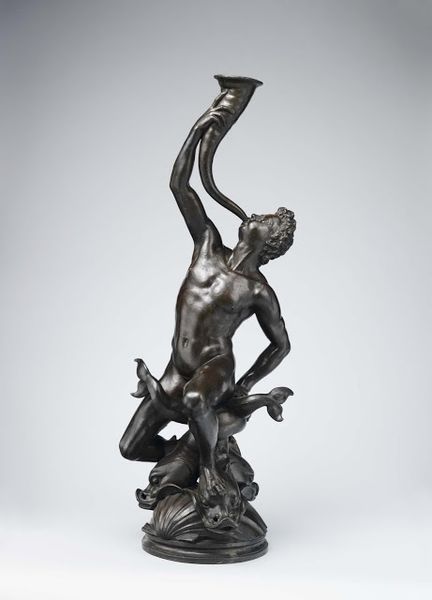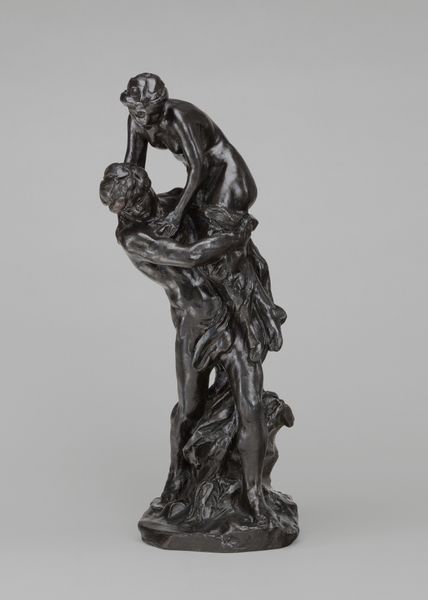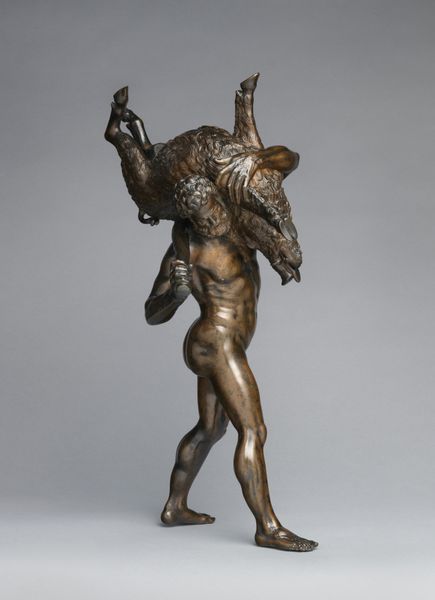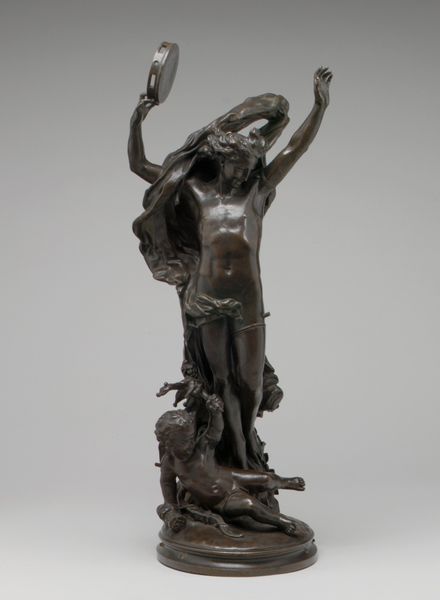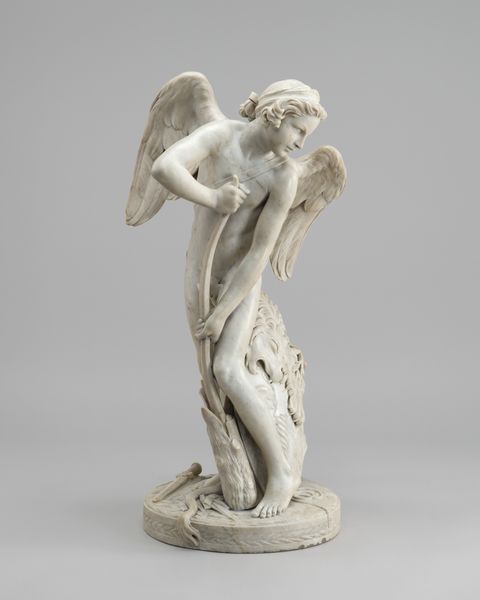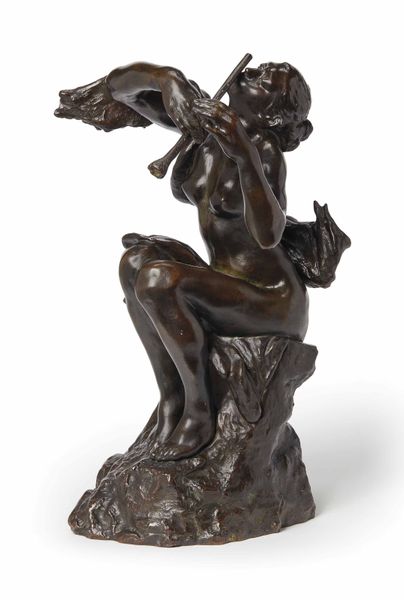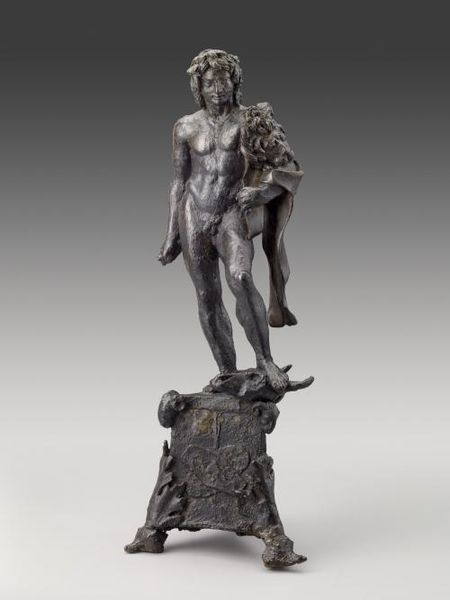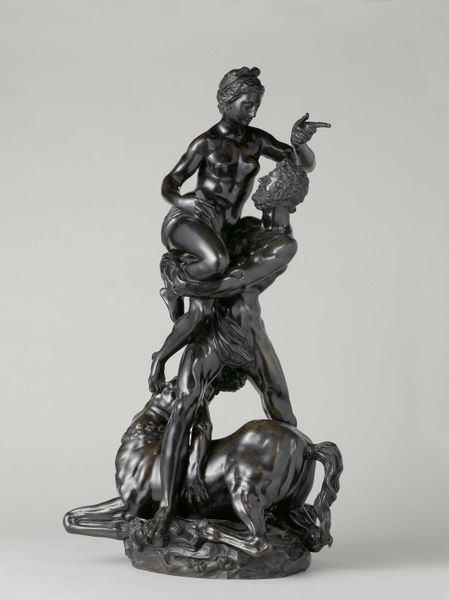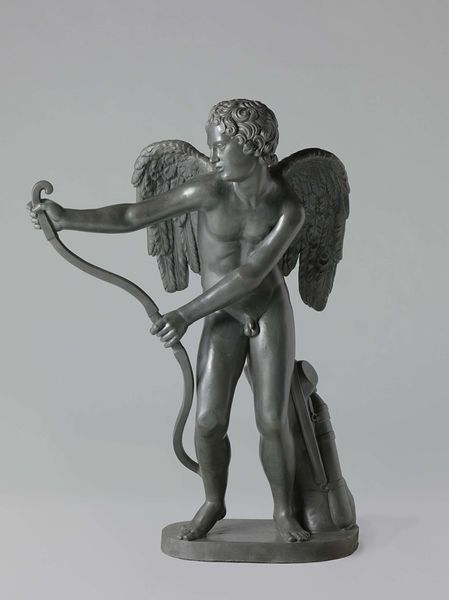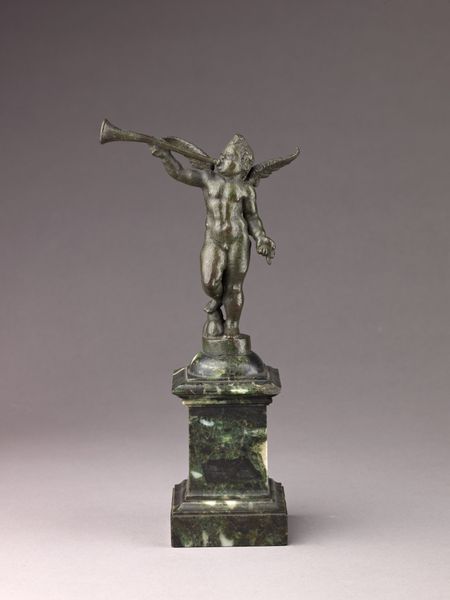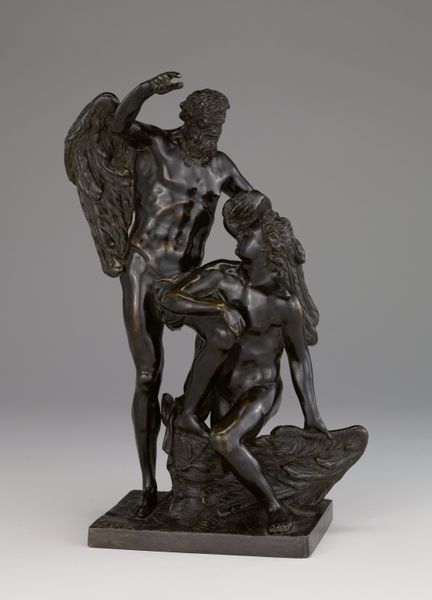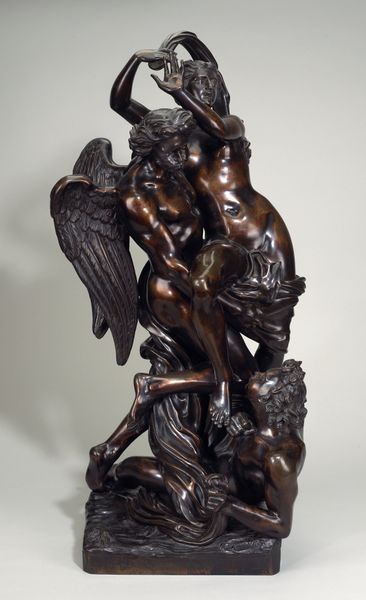
metal, sculpture
#
portrait
#
metal
#
sculpture
#
figuration
#
form
#
11_renaissance
#
geometric
#
sculpture
#
statue
Copyright: Rijks Museum: Open Domain
This intriguing griffon, with its velvet base, was made anonymously, using bronze for the figure and textile for the socle. Bronze is an alloy of copper and tin, chosen for its durability and ability to capture fine detail through casting. The griffon’s form, half-eagle, half-lion, would first have been modeled in wax or clay. Molten bronze, heated to a high temperature, would then be poured into a mold made from this model. After cooling, the mold would be broken away, revealing the bronze figure, which may then have been worked further with chisels to refine the details. The velvety socle it rests on softens the hard material, while elevating the creature. The casting process is labor intensive, demanding skilled metal workers. Bronze itself has a long social history: it has been used for millennia for weapons, tools, and of course, art. The griffon speaks to the traditions of metalworking, while also reminding us that materials and processes are always deeply embedded in social and cultural life.
Comments
No comments
Be the first to comment and join the conversation on the ultimate creative platform.
